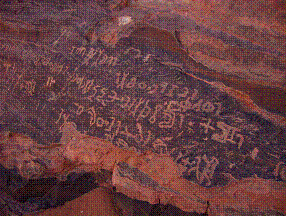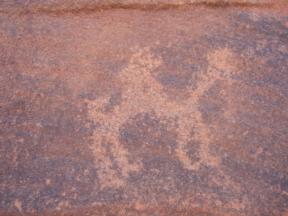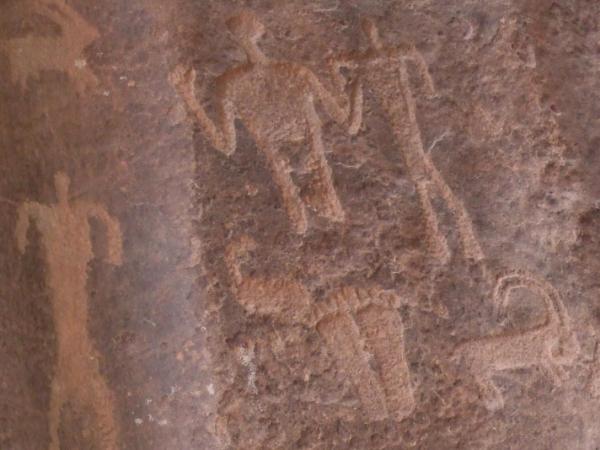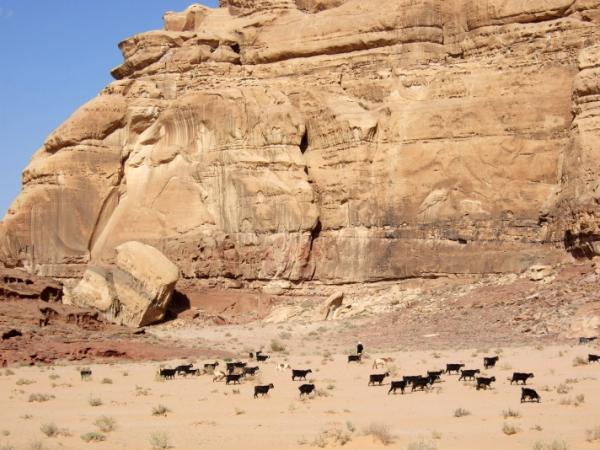

Thamudic inscriptions and graffiti pock mark the smooth rock at strategic Wadi Rum interchanges. Archeologists believe Wadi was inhabited in prehistoric times as the fresh water springs made for a natural crossroads. Camel caravans would stop and rehydrate, graze and exchange the news. Other evidence of man’s presence in Wadi Rum include Neolithic flints, pottery, stone dwellings and of course the present Bedu cliff base houses. The Nabataeans (yes, the ones responsible for carving Petra) preceeded the Thamudic tribes.


Although many Bedu have become semi permant villagers, they still depend on goats for milk (yogurt is a dietary staple) and meat. We saw this young girl over the course of several days – she was alone with her dog and donkey, moving the goats from one grazing area to another. Too shy to approach and discouraged by the somewhat aggressive dog, we kept our distance and just waved as she passed. Barefoot, with a long long colourful skirt and tunic, I wonder what she thought of the parade of strangers who come to merely walk.